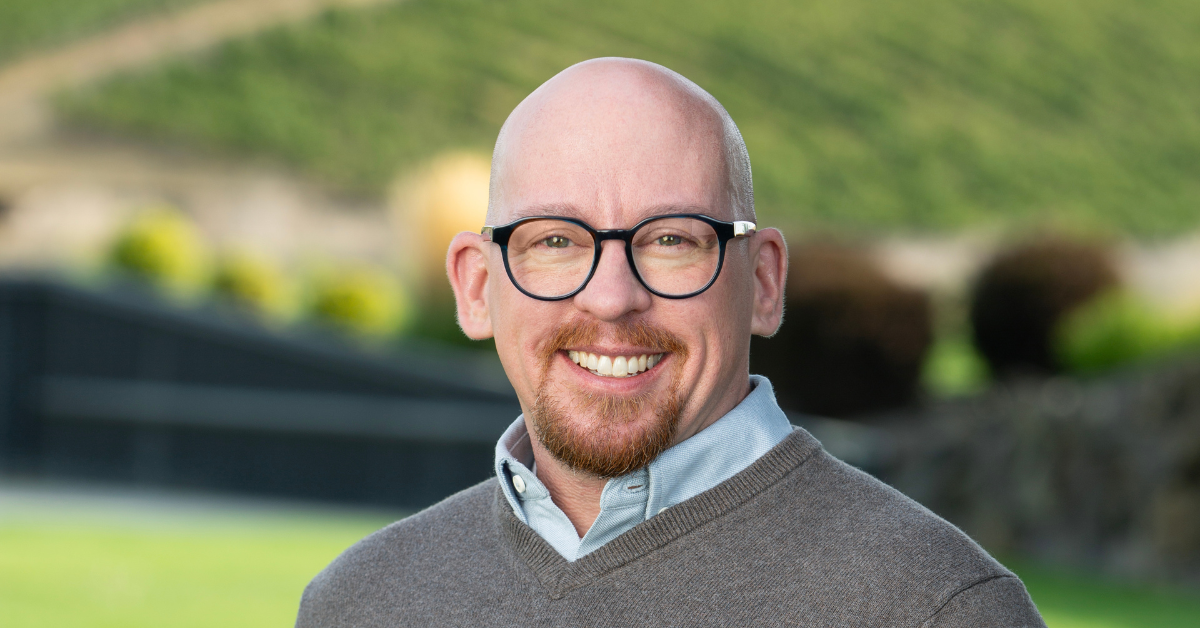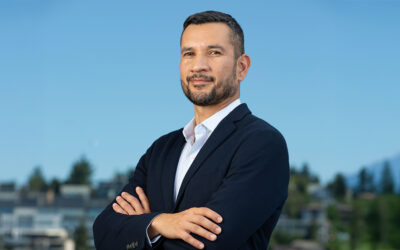
Inatai Board Chair Seth Kirby. Photo: John Lok
On this National Coming Out Day, we’re reminded of the importance of sustained investment in the LGBTQ+ rights movement. Seth Kirby, Chief Impact Officer at the Greater Tacoma Community Foundation and Board Chair of Inatai Foundation, shares key lessons from Tacoma’s battle against anti-transgender initiatives, encouraging funders to adopt a movement mindset for lasting change.
While every day can be a coming out day, for me, National Coming Out Day is an opportunity to reflect on my experience and where we are at as a society in honoring and protecting all queer and trans people. This year, I am reflecting on the past decade of LGBTQ+ organizing in my community.
In 2013, Advocate Magazine declared Tacoma, Washington, the “Gayest City in America” thanks to more than 30 years of LGBTQ+ leadership, community, and allyship. The moniker also came on the heels of hard-earned statewide victories to protect LGBTQ+ rights in Washington with a landmark law passed in 2006 and voter-approved marriage equality in 2012. It was against this backdrop–the Gayest City in America within a seemingly liberal state–that Tacoma became a testbed for attacks against transgender people. As the country faces a new wave of dehumanizing anti-trans policies, that fight nearly a decade ago in my backyard offers valuable lessons for how philanthropic funders can protect LGBTQ+ rights by adopting a movement mindset.
Tacoma’s battle began 2,000 miles away as voters in Houston, Texas, considered a 2015 proposition that, if passed, would have banned employment and housing discrimination based on sexual orientation, gender identity, sex, and race, among other statuses. Without federal or state protections, this citywide proposal would have finally ensured transgender people in Houston could rent an apartment, shop at the grocery store, and apply for a job without fear of discrimination. The proposition failed, in part, because of messaging tested in communities like Tacoma to find the most effective ways to stoke fear and division. Houston’s loss also fueled a new national push against transgender rights.
By January 2016, that push included several bills introduced in the Washington legislature to dismantle LGBTQ+ protections broadly as well as a statewide ballot initiative (I-1515) specifically targeting transgender protections, especially impacting Black and brown transgender women and youth. As a transgender man raised in rural Nebraska without the words to describe my experience, these attacks touched all transgender Washingtonians and our families.
Throughout childhood, I didn’t have the words yet, but understood my experience was somehow different from those of my peers. I first heard the word “transgender” in early 1994 while watching breaking news coverage of Brandon Teena’s murder, just a few hours from my hometown. I knew instantly that my survival depended on leaving my home state in search of the community I ultimately found in Tacoma. While there have been some positive changes, far too many transgender people across the country are waking up to similar realities today, learning overnight they cannot seek life-affirming medical care or no longer have basic rights. To fend off these ongoing threats, funders can shift from reacting to moments and begin investing in a sustainable movement.
In 2015, I was the executive director of one of a handful of LGBTQ+-focused organizations in the state. Leadership by those most affected is imperative for any movement because the connections, relationships, and understanding that come from personal experience–and across generations–are essential for lasting momentum. We needed LGBTQ+ leaders statewide to be visible, engaged, and part of the campaign at all levels. That was my motivation when I made the challenging decision with my family and colleagues to temporarily step away from my day job as executive director of Tacoma’s LGBTQ-focused Oasis Youth Center to volunteer as Chair of Washington Won’t Discriminate, the campaign against I-1515 and, more importantly, to nurture the seeds of a movement to protect LGBTQ+ rights in Washington into the future. As we endure yet more attacks, I’ve been reflecting on the similarities between today and what we faced nearly a decade ago and what it truly means for funders to adopt a movement mindset.
Evolving to meet the moment
First, movements must evolve to meet the moment, not the other way around. A movement’s goal is not policy change alone. The goal is lasting cultural change. And policy debates like these initiatives are one vehicle for the conversations required to create lasting change. But we need to remember that policy change is about the moment, not the movement. And, movements evolve to meet the moment, not the other way around. In 2015, it was difficult to learn in real-time that the infrastructure and interests that secured marriage equality would not be able to help hold the center on this next effort. In fact, many major national donors that had stepped forward for marriage equality were hesitant to invest in what many considered to be a new fight for transgender rights, versus a continuation of a longstanding movement to advance LGBTQ+ protections. Thankfully, the Pride Foundation stepped forward to lead TRANSform Washington, so people could connect with and learn about the experiences of transgender, nonbinary, intersex, and two-spirit Washingtonians.
Investing more than money
Broad institutional allyship spanning the political spectrum and across government, business, faith, labor, and philanthropy was crucial. Also important in our fight was institutional allyship in government, labor, and philanthropy. For those funders who did show up, they supported the movement by lending far more than dollars. Their access, relationships, expertise, and connection to other movements proved just as valuable. For example, United Food and Commercial Workers (UFCW) 21, now UFCW 3000, invested money, but perhaps more importantly, UFCW built relationships to connect, mentor, and bridge newer transgender organizers who weren’t at the table for marriage equality. I also watched individuals in my community and across the state make personally meaningful financial contributions to both C4 and public education efforts because they saw that eroding existing transgender protections would also begin to chip away at nearly 40 years of LGBTQ+ organizing. This type of long view is something I especially encourage small and local funders to remember because movements aren’t built with money alone. Some of our greatest institutional allies in Washington have been those who show up with money for the moment and stick around with insight and influence for the movement.
Embracing the power of community
Finally, in Tacoma, we fully embraced the benefits of that “Gayest City” moniker because community is fundamental to movements. Our opposition was (and remains) part of a national effort fueled by fear, hate, and division. In contrast, we leaned into the strength of our local neighborhoods, nonprofits, faith-based organizations, and social hubs that tie together the fabric of our community. For example, for two years, volunteers came together almost weekly to build community and learn by adapting a deep canvassing model shared with us by LA LGBT Center’s Leadership Lab. By building a movement that supports and is a part of this fabric, we grounded our work in something that would live on far beyond any single moment. Rather than viewing any of these institutions in isolation, I encourage funders to consider the broader role they play in movements that matter to their community.
Even building on decades of effort by advocates before us, our fight was a challenging one. We defeated I-1515 and a similar ballot measure the following year, but the success of those moments paled in comparison to the strides the community made in strengthening the movement. And the work didn’t stop there. Pride Foundation, whose board I served on for a decade, has grown and sustained the movement for LGBTQ+ rights across the Pacific Northwest. What began as a public education campaign nearly a decade ago has evolved to become an entire Community, Advocacy, Research, and Education department with staff and fellows so that movements can grow and be supported beyond campaigns. It’s by no means a universal solution for the constant attacks against our community, as recent setbacks across the country are limiting daily life for gender-diverse people and their families. What can we do? We can begin today with a movement mindset.
In my roles now as Inatai Foundation Board Chair and as Chief Impact Officer with Greater Tacoma Community Foundation, I draw on those lessons and encourage funders of all types and sizes to be deliberate about prioritizing sustained support for LGBTQ+ movements over moments of crisis.
To strengthen the LGBTQ+ movement, funders can intentionally direct resources to a wider array of organizations and communities that encompass diverse geographical, racial, and economic backgrounds. It’s imperative to recognize that people of color, individuals from low-income backgrounds, and those residing in rural areas often encounter distinct hurdles within the LGBTQ+ movement. By diversifying our philanthropic investments, we can guarantee a holistic approach to addressing the multifaceted needs of the LGBTQ+ community. A movement that embraces the spectrum of LGBTQ+ experiences is more resilient and adaptable, capable of navigating external pressures to meet evolving needs.
For example, Inatai Foundation understands that community power-building is a direct pathway to equity and racial justice, and largely grants multiyear, general operating dollars to sustain organizations through movements. Even though Inatai is a newer foundation, it has prioritized forging long-term relationships with organizations with communities of all colors and sizes, such as the Lavender Rights Project, UTOPIA Washington, and YES of Pend Oreille County.
These lessons in the importance of funding the movement are rooted in decades of organizing around LGBTQ+ rights, but resourcing the movement applies to all social change efforts. For funders, using a movement mindset prompts questions that reach the heart of giving strategies. For example, what investments are being made in community leaders who are directly impacted by the issue? How is the movement applying a racial justice analysis? Do organizations and their boards represent the racial and gender diversity of their communities? As funders, are we giving more than dollars to help connect the dots between related movements, people, and organizations? How are we coordinating resources, the infrastructure, and emerging leadership necessary to sustain progress and build power over time? The difference between a moment and a movement is the V (for long-term values, voice, and vision).
Using the prompts and lessons above, philanthropists of all sizes can calibrate social movement giving for sustained impact. Through the joy of progress and the heartbreak of setbacks, progress continues. Only through a movement mindset can we meet this moment while growing stronger for the next.
Seth Kirby is the Chief Impact Officer at the Greater Tacoma Community Foundation and Board Chair of the Inatai Foundation. Previously, he served as Executive Director of Tacoma’s LGBTQ-focused Oasis Youth Center, as Legislative Director of the Washington State Human Rights Commission, and on the board of Pride Foundation.



